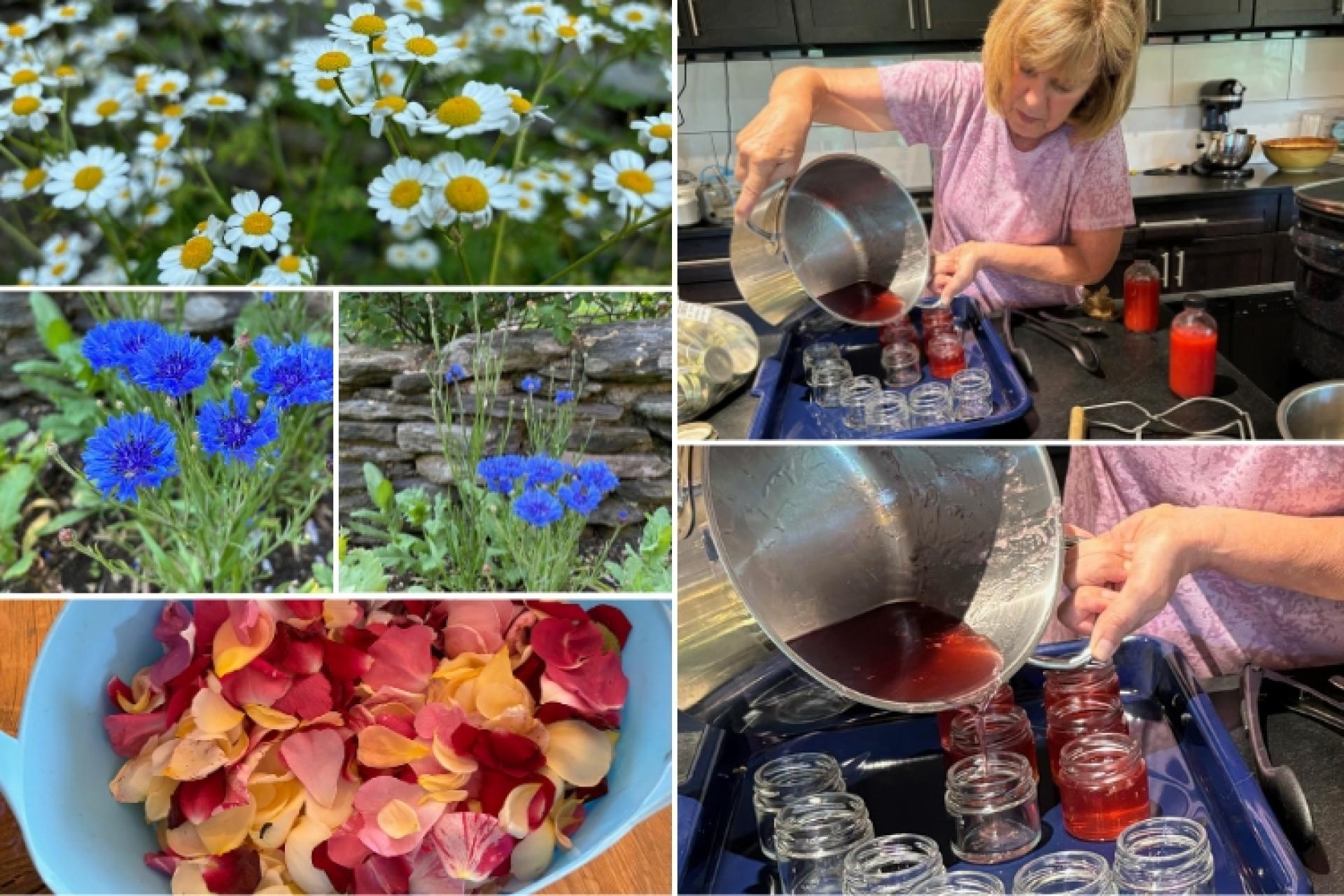You are here
What Is Happening in the BBG Herb Gardens and Kitchen This Week (June 18)
What Is Happening in the BBG Herb Gardens and Kitchen This Week (June 18)
By Barbara F. Smith
“Bachelor’s Button” or “cornflower” — each is a common name for a showy biennial flower (Centaurea cyanus) currently blooming in the BBG Herb Display Garden, within the bed of plants used for dying fibers and textiles. Often raised as an ornamental plant, cornflowers grow 12-48 inches tall with flowers that are most often blue, but can also be purple, pink, white, or red. The flowers are still used today to produce natural dyes. Historically, the plant was named after a mythical creature (the Centaur) known for its ability to heal wounds.
One writer called the “world famous ‘cornflower blue’ to be the bluest blue in the flower kingdom.” The intense blue blossoms — about 1.5 inches wide — prefer full sun and well-drained soil, but they adapt to less favorable conditions, too. With proper care, cornflowers can be a prolific and long-lasting addition to the garden; the plants reseed and naturalize easily. Fresh or dried blossoms are used in bouquets.
Cornflowers are often seen growing in fields and along roads. These garden escapees have naturalized throughout much of the United States and southern Canada.
Cornflowers are closely related to Centaurea montana (mountain bluets) and Centaurea scabiosa (greater Knapweed). These plants share similar characteristics such as distinctive flower heads and their ability to attract pollinators.
And finally, for a moment of cultural tidbits, Dutch painter Johannes Vermeer favored the use of blue in his work; the manner in which he mixed the color is colloquially referred to as cornflower blue. (See, for example, his famous “Girl with a Pearl Earring” painting where the subject wears a blue turban.) The most valuable blue sapphires are called cornflower blue. And a Crayola crayon named “cornflower blue” was added to the box of 48 colors in 1958.
A neighboring plant putting on a flowery show is Tanacetum Parthenium, commonly known as Feverfew. This herb has been used since Roman times as a sedative or headache aid, and there is modern research to support that claim. Feverfew’s small daisy-like flowers are beautiful, fragrant, and long lasting. One writer described their “sweet, pungent fragrance . . . [that] evokes the pleasant smell of a loved one’s hair in the sun . . .”
The Kitchen Crew prepared a batch of “Rose Petal Jelly.” The petals were gathered from the BBG’s Herb Display Garden and Rose Garden, from flowers that were nearing the end of their blooming cycle (see, photo above). The Raspberry Shrub production was bottled, and a new Rhubarb Shrub recipe was started. Finally, a batch of “Sandwich Sprinkle” — a blend of dried, savory herbs was assembled and bottled, available for purchase in the Visitor Center’s Gift Shop.
Thank you for your ongoing interest in the work of the BBG Herb Associates and the products we prepare to support the Garden.
The Berkshire Botanical Garden’s Herb Associates began in 1957 and have been making and selling products for the benefit of BBG ever since. At BBG, the Herb Associates oversee a display garden and production garden, both located near the Center House. Members/volunteers meet every Tuesday morning during the late spring through mid-autumn each year, coinciding when the gardens themselves are open to the public. Members plant, weed and tend the gardens, as well as harvest and process the variety of herbs.
Help Our Garden Grow!
Your donation helps us to educate and inspire visitors of all ages on the art and science of gardening and the preservation of our environment.
All donations are 100 percent tax deductible.



